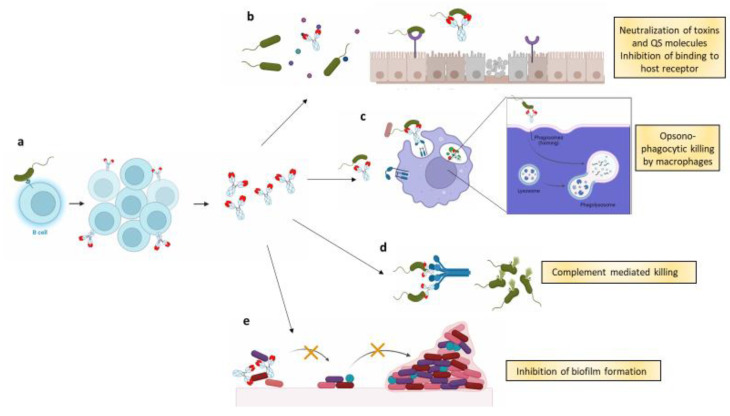Figure 1.
(a) B cells that are exposed to a single pathogen start replicating once they bind to a single virulence factor. The clones start expressing antibodies (monoclonal antibodies), which recognize the same virulence factor; (b) mAbs may act through Fab mediated functions, such as neutralization and inhibition of adhesion. In the first case, mAbs neutralize by binding to the toxins or to quorum sensing (QS) molecules released by the pathogenic bacteria, blocking the virulent effect exerted by the molecules. In the second case, mAbs bind to bacteria and inhibit their interaction with host cell’s receptors. In this way, bacteria cannot colonize the cell surface; (c) mAbs may enhance the opsono-phagocytic activity of macrophages. In some cases, they may also act intracellularly, promoting phago-lysosome formation and elimination of internalized bacteria; (d) once they bind to the pathogen, mAbs recruit complement components to initiate the complement cascade, resulting in bacterial lysis by the membrane attack complex (MAC); (e) lastly, mAbs that bind adhesins on bacterial surface disrupt the interactions within bacteria and between bacteria and the abiotic surface, thus interfering with biofilm formation.

